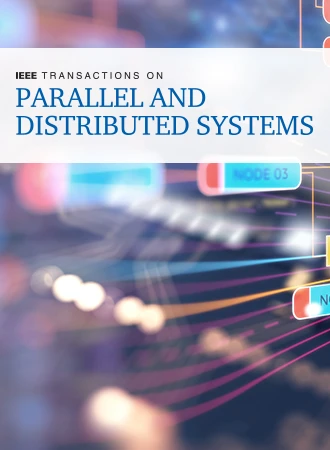在个人计算/通信设备上快速启动应用程序
IF 5.6
2区 计算机科学
Q1 COMPUTER SCIENCE, THEORY & METHODS
IEEE Transactions on Parallel and Distributed Systems
Pub Date : 2025-01-02
DOI:10.1109/TPDS.2024.3525337
引用次数: 0
摘要
Paralfetch 通过以下方式加快个人计算/通信设备上应用程序的启动速度:1)准确收集与启动相关的磁盘读取请求;2)预先安排这些请求,以提高预取期间的 I/O 吞吐量;3)将应用程序的执行与磁盘预取重叠,以隐藏应用程序执行过程中的磁盘访问时间。我们在台式机/笔记本电脑、Raspberry Pi 3 电路板和安卓智能手机的 Linux 内核下实现了 Paralfetch。使用流行应用进行的测试表明,Paralfetch 显著缩短了闪存驱动器和硬盘驱动器上的应用启动时间,其性能优于 GSoC Prefetch Lichota 等人,2007 年;FAST Joo 等人,2011 年。本文章由计算机程序翻译,如有差异,请以英文原文为准。
Paralfetch: Fast Application Launch on Personal Computing/Communication Devices
求助全文
通过发布文献求助,成功后即可免费获取论文全文。
去求助
来源期刊

IEEE Transactions on Parallel and Distributed Systems
工程技术-工程:电子与电气
CiteScore
11.00
自引率
9.40%
发文量
281
审稿时长
5.6 months
期刊介绍:
IEEE Transactions on Parallel and Distributed Systems (TPDS) is published monthly. It publishes a range of papers, comments on previously published papers, and survey articles that deal with the parallel and distributed systems research areas of current importance to our readers. Particular areas of interest include, but are not limited to:
a) Parallel and distributed algorithms, focusing on topics such as: models of computation; numerical, combinatorial, and data-intensive parallel algorithms, scalability of algorithms and data structures for parallel and distributed systems, communication and synchronization protocols, network algorithms, scheduling, and load balancing.
b) Applications of parallel and distributed computing, including computational and data-enabled science and engineering, big data applications, parallel crowd sourcing, large-scale social network analysis, management of big data, cloud and grid computing, scientific and biomedical applications, mobile computing, and cyber-physical systems.
c) Parallel and distributed architectures, including architectures for instruction-level and thread-level parallelism; design, analysis, implementation, fault resilience and performance measurements of multiple-processor systems; multicore processors, heterogeneous many-core systems; petascale and exascale systems designs; novel big data architectures; special purpose architectures, including graphics processors, signal processors, network processors, media accelerators, and other special purpose processors and accelerators; impact of technology on architecture; network and interconnect architectures; parallel I/O and storage systems; architecture of the memory hierarchy; power-efficient and green computing architectures; dependable architectures; and performance modeling and evaluation.
d) Parallel and distributed software, including parallel and multicore programming languages and compilers, runtime systems, operating systems, Internet computing and web services, resource management including green computing, middleware for grids, clouds, and data centers, libraries, performance modeling and evaluation, parallel programming paradigms, and programming environments and tools.
 求助内容:
求助内容: 应助结果提醒方式:
应助结果提醒方式:


